Sugaring vs Waxing: Which Natural Hair Removal Method Is Better? (2025 Guide)
Discover the key differences between sugaring and waxing to choose the gentlest, most effective natural hair removal method for your skin type and sensitivity level.
Tired of razor burn and daily shaving routines? Looking for a more natural approach to hair removal that actually lasts? You’re not alone. Over 60% of people seeking long-term hair removal solutions are turning away from synthetic methods toward natural alternatives like sugaring and waxing.
Both methods promise weeks of smooth skin using gentler, more skin-friendly ingredients than harsh chemical depilatories or painful laser treatments. But which natural method is truly better for your skin, your pain tolerance, and your lifestyle?
After testing both techniques extensively and collecting feedback from hundreds of readers, I’ve discovered that while both sugaring and waxing offer excellent natural hair removal, the “better” choice depends entirely on your skin sensitivity, hair type, and what you value most: gentleness, effectiveness, or convenience.
Sugaring vs Waxing
Choose Sugaring if you want:
- The gentlest natural hair removal method
- Minimal skin irritation and sensitivity
- Easy cleanup with just water
- Ability to remove very short hair (1/8 inch)
Choose Waxing if you prefer:
- Faster application and removal
- Professional salon availability
- Strong effectiveness on coarse hair
- Wider variety of product options
Understanding Natural Hair Removal: The Ancient Art Meets Modern Needs
The Rise of Natural Hair Removal Methods
Before diving into the comparison, it’s important to understand why natural hair removal methods have gained such popularity. Modern consumers are increasingly aware of what they put on their bodies, leading to a 40% increase in demand for natural beauty products over the past five years.
Why people choose natural hair removal:
- Fewer synthetic chemicals and additives
- Reduced risk of allergic reactions
- More environmentally friendly options
- Often gentler on sensitive skin
- Historical proven effectiveness (sugaring dates back to ancient Egypt)




What Is Sugaring? The Ancient Egyptian Method
The Science Behind Sugar Hair Removal
Sugaring is one of the oldest hair removal methods known to humanity, with evidence of its use dating back over 4,000 years to ancient Egypt and Mesopotamia. The technique uses a simple paste made from just three natural ingredients: sugar, water, and lemon juice.
How sugaring paste works:
- Sugar content: Creates adhesive properties that bind to hair
- Water: Provides the right consistency for application
- Lemon juice: Acts as a natural preservative and adds antibacterial properties
The unique sugaring process:
- Paste is applied at body temperature (never hot)
- Applied against the direction of hair growth
- Removed in the direction of hair growth
- Adheres primarily to hair, not skin
Types of Sugaring Methods
Traditional hand sugaring:
- Paste is manipulated by hand without strips
- Allows for precise control and technique
- Ideal for sensitive areas and detailed work
- Requires more skill but offers maximum gentleness
Strip sugaring:
- Uses cloth strips similar to traditional waxing
- Faster application for larger areas
- Easier for beginners to master
- Good compromise between speed and gentleness
Professional vs. DIY sugaring: Professional sugaring offers expert technique and consistent results, while at-home options like organic sugaring paste provide convenience and cost savings.
<What Is Waxing? The Versatile Hair Removal Standard
Understanding Wax Composition
Modern waxing has evolved significantly from its early origins, now offering various formulations to suit different skin types and hair textures. Unlike sugaring’s simple three-ingredient formula, wax can contain multiple components designed for specific purposes.
Common wax ingredients:
- Natural resins: Provide adhesive properties
- Oils and butters: Add skin-conditioning benefits
- Essential oils: Offer aromatherapy and antibacterial properties
- Colorants: Help with visibility during application
Types of Wax for Different Needs
| Wax Type | Best For | Application Method | Pain Level |
|---|---|---|---|
| Soft wax | Large areas (legs, arms, back) | Requires cloth strips | Moderate to high |
| Hard wax | Sensitive areas (bikini, face) | Self-removing, no strips | Low to moderate |
| Fruit wax | Sensitive skin types | Requires cloth strips | Low to moderate |
| Chocolate wax | Dry, sensitive skin | Requires cloth strips | Low |
Quality waxing products:
- Tress Wellness Brazilian Waxing Kit: Complete professional-grade system
- Nad’s Hypoallergenic Facial Wax Strips: Gentle option for sensitive areas
Detailed Comparison: Sugaring vs Waxing
Pain and Comfort Levels
Sugaring pain assessment:
- Pain scale: 3-5/10 (significantly lower than waxing)
- Why it’s gentler: Paste only adheres to hair, not live skin cells
- Technique factor: Removal in direction of hair growth reduces trauma
- Temperature comfort: Applied at body temperature, never hot
Waxing pain assessment:
- Pain scale: 5-7/10 (varies by wax type and technique)
- Intensity factors: Adheres to both hair and skin surface
- Removal trauma: Pulled against hair growth direction
- Heat factor: Applied hot, which can add to discomfort
Real user experiences: “I was amazed at how much gentler sugaring felt compared to waxing. The first time I tried it, I kept waiting for the ‘real’ pain to hit, but it never did.” – Sarah, sensitive skin user
“Waxing definitely hurts more initially, but I’ve gotten used to it. The speed makes up for the extra discomfort for me.” – Jessica, regular waxing client
Effectiveness and Hair Removal Results
Sugaring effectiveness:
- Hair length requirement: Can remove hair as short as 1/8 inch
- Root extraction: Excellent removal from the root
- Regrowth pattern: Hair grows back finer and sparser over time
- Suitable hair types: Works on all hair types, especially effective on fine to medium hair
Waxing effectiveness:
- Hair length requirement: Needs hair at least 1/4 inch long
- Removal power: Excellent for coarse, thick, or stubborn hair
- Coverage speed: Faster for large areas due to application technique
- Professional results: Consistently smooth finish when done properly
Skin Health and Safety Considerations
Sugaring skin benefits:
- Natural exfoliation: Gently removes dead skin cells
- Reduced ingrown hairs: Lower risk due to hair growth direction removal
- Antibacterial properties: Lemon juice provides natural antimicrobial benefits
- No chemical burns: Body temperature application eliminates heat damage risk
Waxing skin considerations:
- Potential irritation: Higher risk of redness and sensitivity
- Heat sensitivity: Risk of burns from hot wax application
- Chemical reactions: Possible allergic responses to synthetic ingredients
- Skin lifting: Risk of removing live skin cells along with hair
Cost Analysis: Short-term vs Long-term Investment
Sugaring costs:
- Professional sugaring: $40-$80 per session
- DIY sugaring paste: $10-$25 per batch (multiple uses)
- Annual professional cost: $320-$640 (8 sessions)
- Annual DIY cost: $60-$150
Waxing costs:
- Professional waxing: $35-$75 per session
- At-home wax kits: $15-$40 per kit
- Annual professional cost: $280-$600 (8 sessions)
- Annual DIY cost: $120-$320
Long-term value considerations: Both methods offer similar long-term costs, but sugaring ingredients are often less expensive for DIY enthusiasts who want to make their own paste.
<Application Techniques: Mastering Each Method
Sugaring Application Step-by-Step
Preparation phase:
- Ensure hair is 1/8 to 1/4 inch long
- Clean skin thoroughly and dry completely
- Lightly dust with cornstarch or talcum powder
- Warm sugaring paste to body temperature
Application process:
- Apply paste against hair growth direction using fingers
- Press firmly to ensure good adhesion to hair
- Leave a small edge for easy grasping
- Hold skin taut with non-working hand
Removal technique:
- Quickly pull paste in direction of hair growth
- Keep hand low and parallel to skin
- Move swiftly and confidently
- Immediately apply pressure to soothe skin
Post-treatment care:
- Remove any residue with warm water
- Apply soothing aloe vera gel
- Avoid hot showers for 24 hours
- Moisturize regularly to prevent dryness
Waxing Application Mastery
Pre-wax preparation:
- Hair should be 1/4 to 1/2 inch long
- Clean area with antibacterial cleanser
- Apply pre-wax oil to protect skin
- Heat wax to proper temperature (test on wrist)
Waxing process:
- Apply thin layer in direction of hair growth
- Place cloth strip over wax, leaving tab exposed
- Press down firmly and smooth strip
- Hold skin taut below strip
Strip removal:
- Pull strip quickly against hair growth direction
- Keep hand low and movement swift
- Immediately apply pressure to area
- Check for missed hairs and repeat if necessary
Aftercare protocol:
- Remove wax residue with oil-based remover
- Apply cooling gel or aloe vera
- Avoid sun exposure for 24-48 hours
- Use gentle, fragrance-free moisturizers
Body Area Specific Recommendations
Facial Hair: Precision and Gentleness Required
Sugaring for face:
- Advantages: Gentler on delicate facial skin, precise control
- Best areas: Upper lip, chin, eyebrow shaping
- Technique: Use small amounts for detailed work
- Considerations: May take longer but reduces skin trauma
Waxing for face:
- Advantages: Quick application, professional availability
- Best areas: Larger facial areas, quick touch-ups
- Product choice: Use hard wax or facial-specific strips
- Caution: Higher risk of skin damage on thin facial skin
Professional recommendation: For facial hair, especially around sensitive areas like eyes, consider starting with sugaring or professional treatments for best results.
Bikini Area: Managing Maximum Sensitivity
Sugaring for bikini area:
- Comfort level: Significantly less painful than waxing
- Skin safety: Lower risk of irritation and ingrown hairs
- Hygiene factor: Water-soluble cleanup is more sanitary
- Professional vs DIY: Professional recommended for Brazilian styles
Waxing for bikini area:
- Speed advantage: Faster coverage for full Brazilian
- Professional expertise: Most salons offer waxing services
- Product variety: Hard wax specifically designed for sensitive areas
- Results: Very smooth finish when done properly
Special considerations for bikini area:
- Take pain relievers 30 minutes before treatment
- Schedule between menstrual cycles for reduced sensitivity
- Consider professional services for first-time experiences
- Use high-quality products designed for sensitive skin
Large Body Areas: Legs, Arms, and Back
Sugaring for large areas:
- Time investment: Slower application but gentler process
- Technique requirement: Takes practice to master for large areas
- Comfort factor: Less painful overall experience
- DIY feasibility: Manageable at home with practice
Waxing for large areas:
- Efficiency: Much faster coverage and application
- Professional advantage: Widely available at salons
- Product variety: Many options designed for body waxing
- Cost effectiveness: Often more economical for large areas
Advanced Tips for Success
Maximizing Sugaring Results
Temperature control:
- Paste should feel warm, never hot
- Store properly between uses
- Reheat gently if paste becomes too stiff
- Test temperature on wrist before application
Technique refinement:
- Practice on less sensitive areas first
- Work in small sections for better control
- Keep skin taut for more effective removal
- Don’t rush the process
Paste consistency:
- Too soft = won’t adhere properly
- Too hard = difficult to apply and remove
- Perfect consistency = pulls easily but holds shape
- Adjust with small amounts of water if needed
Optimizing Waxing Experience
Temperature management:
- Test wax on inner wrist before facial/body application
- Never apply wax that’s too hot to touch comfortably
- Reheat gradually if wax becomes too thick
- Use wax warmers with temperature controls
Professional techniques:
- Apply thin, even layers for best adhesion
- Always pull in one swift motion
- Work systematically across treatment area
- Have aftercare supplies ready before starting
Product selection:
- Choose wax type based on hair thickness and skin sensitivity
- Quality hard wax for sensitive areas
- Soft wax strips for convenience and large areas
Common Problems and Solutions
Sugaring Troubleshooting
“My sugaring paste is too sticky and won’t remove cleanly”
- Cause: Paste may be too warm or humid conditions
- Solution: Let paste cool slightly, use powder on skin
- Prevention: Store paste in cool, dry place
“Sugaring isn’t removing all the hair”
- Cause: Hair may be too short or paste not applied properly
- Solution: Ensure hair is at least 1/8 inch, apply against growth
- Technique tip: Press paste firmly before removal
“I’m getting more ingrown hairs with sugaring”
- Cause: Improper aftercare or sensitive skin reaction
- Solution: Exfoliate gently 48 hours after treatment, moisturize daily
- Prevention: Follow proper aftercare routine consistently
Waxing Problem-Solving
“Wax is burning my skin”
- Immediate action: Apply cool compress, aloe vera gel
- Prevention: Always test temperature, use lower heat settings
- Product switch: Consider switching to hard wax or sugaring
“I keep getting ingrown hairs after waxing”
- Solution: Regular gentle exfoliation, use salicylic acid products
- Prevention: Don’t wax hair that’s too short, follow aftercare protocols
- Consider: Switching to sugaring for sensitive areas
“Wax residue won’t come off my skin”
- Removal method: Use oil-based products, never try to scrape off
- Products: Specialized wax removers or coconut oil
- Prevention: Apply proper amount of wax, use quality products
Safety Guidelines and Contraindications
When NOT to Use Either Method
Avoid sugaring or waxing if you have:
- Open cuts or wounds in treatment area
- Severe eczema or psoriasis flare-ups
- Recent sunburn or sun damage
- Active skin infections
- Recent chemical peels or laser treatments
Medication considerations:
- Blood thinners may increase bruising risk
- Retinoids can make skin more sensitive
- Some acne medications affect skin thickness
- Always consult healthcare provider if unsure
Pre-Treatment Health Assessment
Skin condition checklist:
- Check for moles, cuts, or unusual skin changes
- Assess skin sensitivity level
- Note any recent skin treatments
- Consider hormonal factors (pregnancy, menstruation)
Allergy testing:
- Perform patch test 24 hours before full treatment
- Test both paste/wax and any aftercare products
- Watch for delayed reactions
- Have antihistamines available if sensitive
Professional vs DIY: Making the Right Choice
When to Choose Professional Services
Professional sugaring benefits:
- Expert technique reduces discomfort
- Consistent, predictable results
- Access to high-quality products
- Proper sanitation and safety protocols
Professional waxing advantages:
- Speed and efficiency
- Ability to reach difficult areas
- Experience with different skin types
- Immediate problem-solving if issues arise
Finding quality professionals:
- Check certifications and training
- Read reviews and ask for recommendations
- Observe cleanliness and sanitation practices
- Ensure they use fresh supplies for each client
DIY Success Strategies
Home sugaring setup:
- Invest in quality sugaring paste or ingredients
- Create proper workspace with good lighting
- Have all supplies ready before starting
- Practice technique on less sensitive areas
Home waxing essentials:
- Complete waxing kit with warmer and supplies
- High-quality wax appropriate for your skin type
- Proper aftercare products
- Good lighting and comfortable positioning
Long-term Hair Reduction: What to Expect
Sugaring Long-term Results
Timeline expectations:
- Sessions 1-3: Learning curve, moderate hair reduction
- Sessions 4-6: Noticeable reduction in hair density
- Sessions 7+: Significantly finer, sparser regrowth
- Long-term: Up to 30-50% permanent reduction possible
Factors affecting results:
- Consistency of treatments
- Individual hair growth cycles
- Hormonal factors
- Proper technique and timing
Waxing Long-term Benefits
Progressive improvements:
- Hair gradually becomes finer and softer
- Regrowth periods extend over time
- Some follicles stop producing terminal hair
- Overall maintenance becomes easier
Realistic expectations:
- Not a permanent hair removal method
- Results vary significantly between individuals
- Hormonal changes can affect outcomes
- Consistent treatment key to best results
Environmental and Ethical Considerations
Eco-Friendly Aspects of Sugaring
Environmental benefits:
- Biodegradable ingredients
- Minimal packaging waste
- No synthetic chemicals
- Water-soluble cleanup
Sustainable practices:
- Make paste from organic ingredients
- Reuse containers and applicators
- Compost organic waste
- Support eco-conscious brands
Waxing Environmental Impact
Considerations:
- Some waxes contain synthetic ingredients
- Disposable strips create waste
- Energy use for heating wax
- Packaging considerations
Eco-friendly waxing options:
- Choose natural wax formulations
- Use reusable cloth strips when possible
- Support brands with sustainable practices
- Proper disposal of used materials
Future Trends in Natural Hair Removal
Innovation in Sugaring
Emerging developments:
- Pre-made pastes with enhanced formulations
- Improved application tools and techniques
- Professional training standardization
- Research into optimal sugar ratios
Waxing Technology Advances
Current innovations:
- Lower-temperature wax formulations
- Improved hard wax consistencies
- Better strip materials and adhesion
- Pain-reduction additives
Alternative Natural Methods
Growing interest in:
- Threading for facial hair
- Epilators for home use
- Natural depilatory formulations
- Combination treatment approaches
Making Your Final Decision
Choose Sugaring if:
- You have sensitive or reactive skin
- You prefer the gentlest possible method
- You’re interested in DIY natural beauty
- You can remove shorter hair lengths
- You want easy, water-only cleanup
Choose Waxing if:
- You prioritize speed and efficiency
- You have thick, coarse, or stubborn hair
- You prefer professional salon services
- You want immediate smooth results
- You’re comfortable with moderate pain levels
Consider a Combination Approach if:
- You want different methods for different body areas
- You’re transitioning between methods
- You have varying sensitivity across your body
- You want to compare results directly
Expert Recommendations by Skin Type
For Sensitive Skin
First choice: Sugaring with organic paste Second choice: Hard wax specifically formulated for sensitive skin Avoid: Soft wax with synthetic additives Special care: Always patch test, use gentle aftercare
For Normal Skin
Best value: Quality at-home waxing kit Professional option: Either sugaring or waxing based on preference Consider: Cost and convenience factors Flexibility: Can experiment with both methods safely
For Resilient Skin
Fastest results: Professional soft wax treatments DIY option: Either method with focus on technique Maintenance: Can handle more frequent treatments Experimentation: Try both methods to determine preference
<Building Your Natural Hair Removal Routine
Starting Your Journey
Week 1: Research and gather supplies Week 2: Perform patch tests and prepare skin Week 3: First treatment on less sensitive area Week 4: Evaluate results and adjust technique
Developing Consistency
Monthly schedule: Plan treatments around hair growth cycles Seasonal adjustments: Modify routine for weather and activities Product rotation: Try different formulations to find favorites Skill development: Practice technique for better results
Long-term Success
Track progress: Document results with photos and notes Adjust timing: Optimize schedule based on individual hair growth Upgrade tools: Invest in better equipment as skills improve Stay informed: Keep up with new products and techniques
<Conclusion: Your Path to Smooth, Natural Hair Removal
After extensively comparing sugaring and waxing, the truth is that both methods offer excellent natural hair removal results. The “better” choice depends entirely on your individual priorities, skin sensitivity, and lifestyle preferences.
For ultimate gentleness and skin health: Sugaring wins hands down. Its body-temperature application, natural ingredients, and hair-growth-direction removal make it the most skin-friendly option available.
For speed, convenience, and professional availability: Waxing takes the lead. Its faster application, widespread salon availability, and effectiveness on all hair types make it the practical choice for many people.
My professional recommendation: Start with sugaring if you have sensitive skin or are new to natural hair removal. The gentler experience will help you build confidence and technique. If you find you want faster results or have very coarse hair, then consider transitioning to waxing.
Many of my readers find success with a combination approach: sugaring for sensitive areas like the face and bikini line, and waxing for larger, less sensitive areas like legs and arms.
Remember, both methods require practice to master. Don’t be discouraged if your first attempts aren’t perfect – even professionals had to learn these techniques over time.
Ready to start your natural hair removal journey? Begin with quality products like organic sugaring paste for the gentlest introduction, or a complete waxing kit for faster results.
For more guidance on natural hair removal methods, check out our comprehensive guides on Brazilian waxing preparation or explore professional treatment options if you’re considering long-term solutions.
Whatever method you choose, prioritize proper technique, quality products, and consistent aftercare. Your journey to smooth, naturally hair-free skin starts with the first treatment – make it a comfortable and successful one.
<




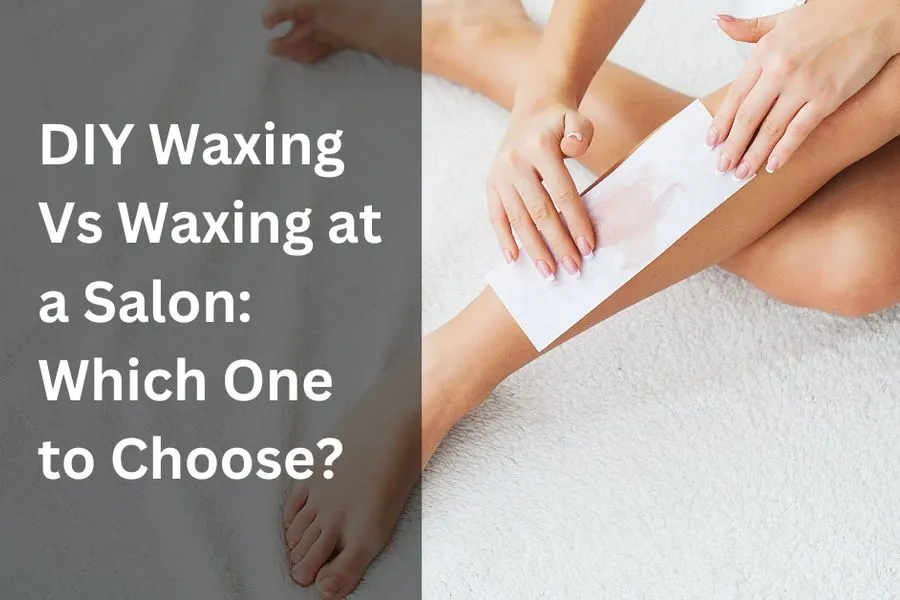
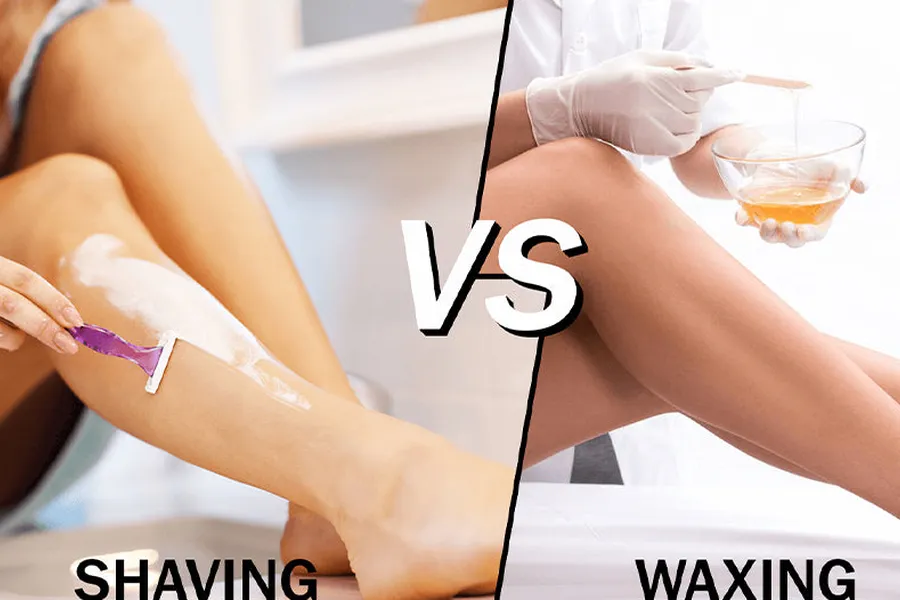
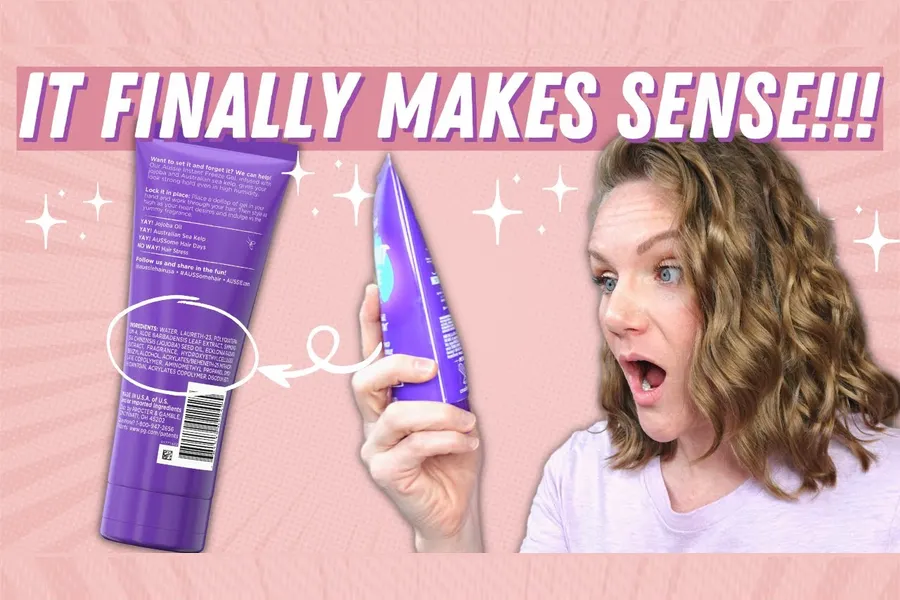
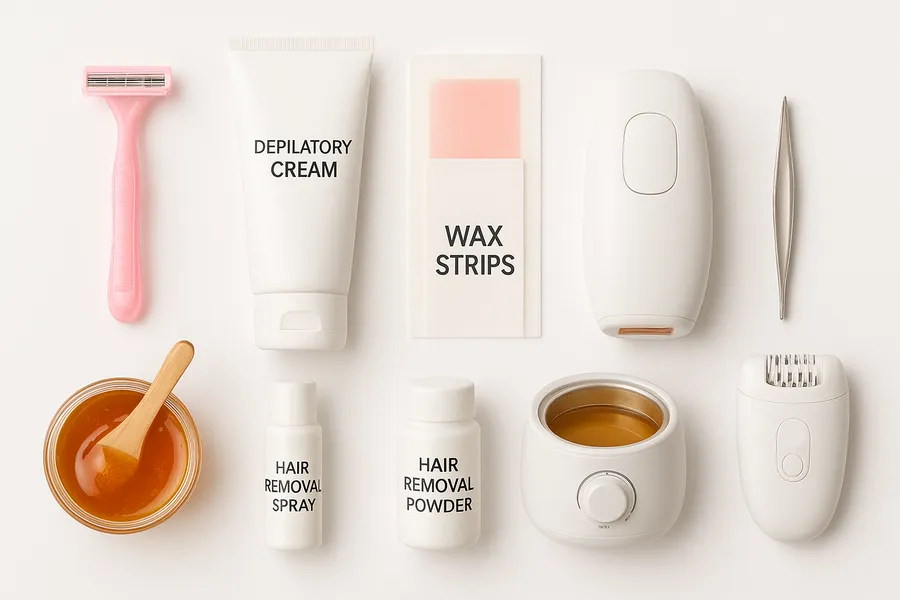
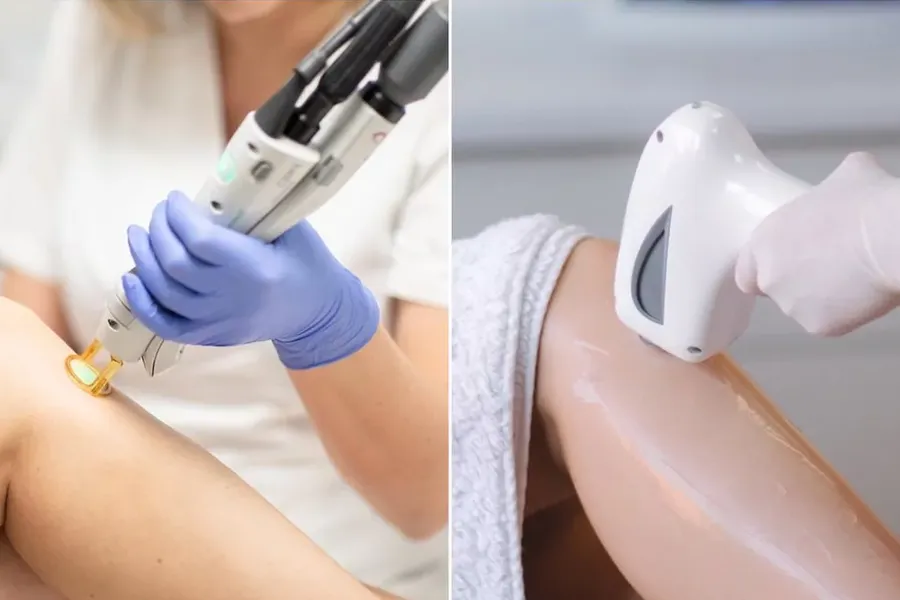
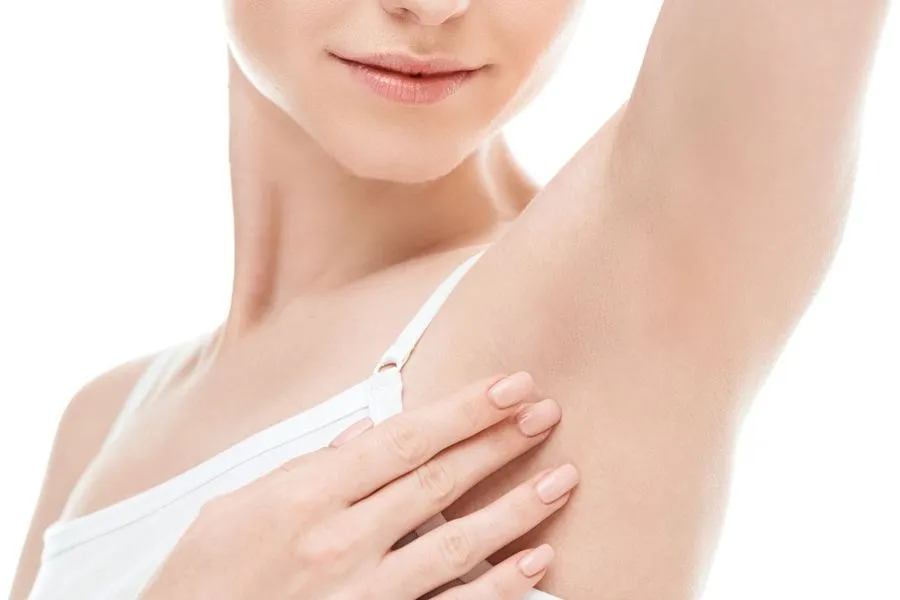
Honestly, I’ve never really understood the differences until now. Thanks for breaking it down! I think I’m still leaning towards waxing because it feels like I get a cleaner finish? But the benefits of sugaring sound appealing too. Any suggestions on which kit to buy?
Good suggestion, Liam! It’s important to find what works best for your skin type.
If you’re considering waxing, the Nad’s Facial Wax Strips are super easy to use for beginners! Plus, they’re hypoallergenic.
Thanks! I might give those a shot! But my friend swears by sugaring, so I’m torn!